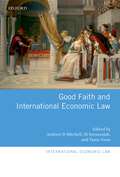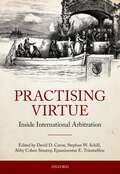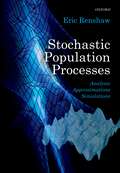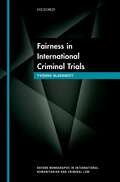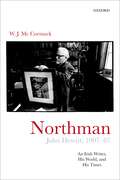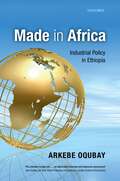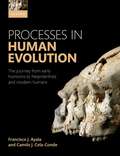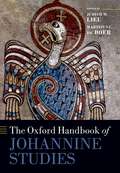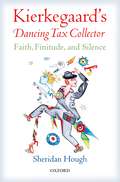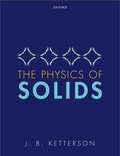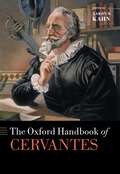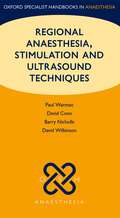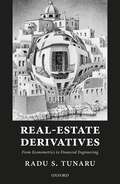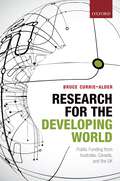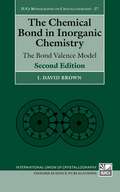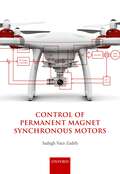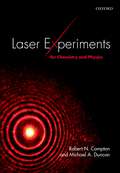- Table View
- List View
Good Faith and International Economic Law (International Economic Law Series)
by Andrew D Mitchell, M Sornar Ajah and Tania VoonThe past two decades have seen a significant proliferation of trade and investment treaties around the world. States are increasingly negotiating agreements that regulate both trade and investment, such as the Trans-Pacific Partnership Agreement and the Transatlantic Trade and Investment Partnership. The number of investor-state dispute settlement cases is rapidly accumulating each year, yet states' enthusiasm for investor-state arbitration has become more qualified as concern has intensified that the system can be abused by foreign investors. Good faith is therefore becoming increasingly important as a principle, particularly in the investment context, due to disputes about investor conduct such as corporate restructuring in order to gain the protection of a particular investment treaty regarding an existing or foreseeable dispute, and States' responses to public policy concerns through attempts to modify or terminate investment treaties in the face of ongoing or expected claims. Tribunals adjudicating investment disputes have used the principle of good faith in a haphazard and uncoordinated manner, causing serious problems of uncertainty and inconsistency. In response to these developments, this book contains the first comprehensive and integrated analysis of the treatment of good faith in international investment law, noting the broader implications of good faith in public international law and international trade law.
Practising Virtue: Inside International Arbitration
International arbitration has developed into a global system of adjudication, dealing with disputes arising from a variety of legal relationships: between states, between private commercial actors, and between private and public entities. It operates to a large extent according to its own rules and dynamics - a transnational justice system rather independent of domestic and international law. In response to its growing importance and use by disputing parties, international arbitration has become increasingly institutionalized, professionalized, and judicialized. At the same time, it has gained significance beyond specific disputes and indeed contributes to the shaping of law. Arbitrators have therefore become not only adjudicators, but transnational lawmakers. This has raised concerns over the legitimacy of international arbitration. Practising Virtue looks at international arbitration from the 'inside', with an emphasis on its transnational character. Instead of concentrating on the national and international law governing international arbitration, it focuses on those who practise international arbitration, in order to understand how it actually works, what its sources of authority are, and what demands of legitimacy it must meet. Putting those who practise arbitration into the centre of the system of international arbitration allows us to appreciate the way in which they contribute to the development of the law they apply. This book invites eminent arbitrators to reflect on the actual practice of international arbitration, and its contribution to the transnational justice system.
Practising Virtue: Inside International Arbitration
by David D Caron, Stephan W Schill, Abby Cohen Smutny and Epaminontas E TriantafilouInternational arbitration has developed into a global system of adjudication, dealing with disputes arising from a variety of legal relationships: between states, between private commercial actors, and between private and public entities. It operates to a large extent according to its own rules and dynamics - a transnational justice system rather independent of domestic and international law. In response to its growing importance and use by disputing parties, international arbitration has become increasingly institutionalized, professionalized, and judicialized. At the same time, it has gained significance beyond specific disputes and indeed contributes to the shaping of law. Arbitrators have therefore become not only adjudicators, but transnational lawmakers. This has raised concerns over the legitimacy of international arbitration. Practising Virtue looks at international arbitration from the 'inside', with an emphasis on its transnational character. Instead of concentrating on the national and international law governing international arbitration, it focuses on those who practise international arbitration, in order to understand how it actually works, what its sources of authority are, and what demands of legitimacy it must meet. Putting those who practise arbitration into the centre of the system of international arbitration allows us to appreciate the way in which they contribute to the development of the law they apply. This book invites eminent arbitrators to reflect on the actual practice of international arbitration, and its contribution to the transnational justice system.
Stochastic Population Processes: Analysis, Approximations, Simulations
by Eric RenshawThe vast majority of random processes in the real world have no memory - the next step in their development depends purely on their current state. Stochastic realizations are therefore defined purely in terms of successive event-time pairs, and such systems are easy to simulate irrespective of their degree of complexity. However, whilst the associated probability equations are straightforward to write down, their solution usually requires the use of approximation and perturbation
Fairness in International Criminal Trials (Oxford Monographs in International Humanitarian & Criminal Law)
by Yvonne McDermottWith the acceptance of international criminal procedure as a self-sustaining discipline and as the tribunals established to try the most serious crimes in the former Yugoslavia, Sierra Leone, and Rwanda have completed or are beginning to wind up their activities, the time is ripe for a critical evaluation of these international criminal tribunals and their legacy. By examining the due process standards embraced by the five contemporary international criminal tribunals, the author draws conclusions about how the right to a fair trial should be interpreted in international criminal law. This volume addresses key conceptual questions on fairness, including: should international criminal tribunals set the highest standards of fairness, or is it sufficient for their practice to be 'just fair enough'? To whom does the right to a fair trial attach, and can actors such as the prosecution and victims be accurately said to benefit from that right? Does fairness require the full realization of a number of guarantees owed to the accused under the statutory frameworks of international criminal tribunals, or should we instead be concerned with the fairness of the trial 'as a whole'? What is the interplay between domestic and international courts on questions of procedural fairness? What are the elements of fairness in international criminal proceedings? And what remedies are available for breaches of fair trial rights? Through an in-depth exploration of the right to a fair trial, the author concludes that international criminal tribunals have a role in setting the highest standards of due process protection in their procedures, and that in so doing, they can have a positive impact on domestic justice systems.
Fairness in International Criminal Trials (Oxford Monographs in International Humanitarian & Criminal Law)
by Yvonne McDermottWith the acceptance of international criminal procedure as a self-sustaining discipline and as the tribunals established to try the most serious crimes in the former Yugoslavia, Sierra Leone, and Rwanda have completed or are beginning to wind up their activities, the time is ripe for a critical evaluation of these international criminal tribunals and their legacy. By examining the due process standards embraced by the five contemporary international criminal tribunals, the author draws conclusions about how the right to a fair trial should be interpreted in international criminal law. This volume addresses key conceptual questions on fairness, including: should international criminal tribunals set the highest standards of fairness, or is it sufficient for their practice to be 'just fair enough'? To whom does the right to a fair trial attach, and can actors such as the prosecution and victims be accurately said to benefit from that right? Does fairness require the full realization of a number of guarantees owed to the accused under the statutory frameworks of international criminal tribunals, or should we instead be concerned with the fairness of the trial 'as a whole'? What is the interplay between domestic and international courts on questions of procedural fairness? What are the elements of fairness in international criminal proceedings? And what remedies are available for breaches of fair trial rights? Through an in-depth exploration of the right to a fair trial, the author concludes that international criminal tribunals have a role in setting the highest standards of due process protection in their procedures, and that in so doing, they can have a positive impact on domestic justice systems.
Northman (1907-87): An Irish writer, his world, and his times
by W. J. McCormackThis, the first ever biography of John Hewitt, is based on archival material, both personal and literary. In many ways it is also a biography of his wife, Roberta (nee Black), whose manuscript journal is also in the public domain. To establish Hewitt's late arrival as a poet, the book opens with a chapter recounting his negotiations with a London publisher over a long period and the eventual appearance of No Rebel Word (1949). Successive chapters trace his education, courtship, literary apprenticeship, first employment as a junior gallery curator in Belfast, the political conflicts of the 1930s and then the War Years, his rejection for the post of director in Belfast's Civic Museum and Gallery, and his utopian commitment to regionalism. Appointment to the Herbert Gallery in Coventry in 1956 brought recognition and confidence. His leanings towards socialist realism came to accommodate abstract art, and he defended the sculptor Barbara Hepworth against the penny-pinching ratepayers. Throughout this two-part career, Hewitt maintained his output as poet, culminating in the Collected Poems (1968). His Irish political commitments never wavered, though he became cautious about forms of nationalism which proclaimed themselves left-wing. Roberta Hewitt's work for the Coventry Labour Party provided an outlet for her energies and her domestic frustrations. Throughout these forty years, the poetry is kept constantly in view, sometime by reference to individual pieces and their origins, and some by means of longer 'breaks for text' where more detailed criticism is practised. In 1972, the Hewitts returned to Belfast whenthe Troubles reached an ugly peak. Committed to anti-sectarianism, Hewitt withheld support from all parties, though he took an interest in trade union activity. Publishing (perhaps too much) poetry in his last decade-and-a-half, he died very much in harness.
Processes in Human Evolution: The journey from early hominins to Neanderthals and modern humans
by Francisco J. Ayala Camilo J. Cela-CondeThe discoveries of the last decade have brought about a completely revised understanding of human evolution due to the recent advances in genetics, palaeontology, ecology, archaeology, geography, and climate science. Written by two leading authorities in the fields of physical anthropology and molecular evolution, Processes in Human Evolution presents a reconsidered overview of hominid evolution, synthesising data and approaches from a range of inter-disciplinary fields. The authors pay particular attention to population migrations - since these are crucial in understanding the origin and dispersion of the different genera and species in each continent - and to the emergence of the lithic cultures and their impact on the evolution of cognitive capacities. Processes in Human Evolution is intended as a primary textbook for university courses on human evolution, and may also be used as supplementary reading in advanced undergraduate and graduate courses. It is also suitable for a more general audience seeking a readable but up-to-date and inclusive treatment of human origins and evolution.
The Oxford Handbook of Johannine Studies (Oxford Handbooks)
The contribution of the Johannine literature to the development of Christian theology, and particularly to Christology, is uncontested, although careful distinction between the implications of its language, especially that of sonship, in a first century 'Jewish' context and in the subsequent theological controversies of the early Church has been particularly important if not always easily sustained. Recent study has shaken off the weight of subsequent Christian appropriation of Johannine language which has sometimes made readers immune to the ambiguities and challenging tensions in its thought. The Oxford Handbook of Johannine Studies begins with chapters concentrating on discussions of the background and context of the Johannine literature, leading to the different ways of reading the text, and thence to the primary theological themes within them, before concluding with some discussion of the reception of the Johannine literature in the early church. Inevitably, given their different genres and levels of complexity, some chapters pay most if not all attention to the Gospel, whereas others are more able to give a more substantial place to the letters. All the contributors have themselves made significant contributions to their topic. They have sought to give a balanced introduction to the relevant scholarship and debate, but they have also been able to present the issues from their own perspective. The Handbook will help those less familiar with the Johannine literature to get a sense of the major areas of debate and why the field continues to be one of vibrant and exciting study, and that those who are already part of the conversation will find new insights to enliven their own on-going engagement with these writings.
The Oxford Handbook of Johannine Studies (Oxford Handbooks)
by Judith M. Lieu and Martinus C. de BoerThe contribution of the Johannine literature to the development of Christian theology, and particularly to Christology, is uncontested, although careful distinction between the implications of its language, especially that of sonship, in a first century 'Jewish' context and in the subsequent theological controversies of the early Church has been particularly important if not always easily sustained. Recent study has shaken off the weight of subsequent Christian appropriation of Johannine language which has sometimes made readers immune to the ambiguities and challenging tensions in its thought. The Oxford Handbook of Johannine Studies begins with chapters concentrating on discussions of the background and context of the Johannine literature, leading to the different ways of reading the text, and thence to the primary theological themes within them, before concluding with some discussion of the reception of the Johannine literature in the early church. Inevitably, given their different genres and levels of complexity, some chapters pay most if not all attention to the Gospel, whereas others are more able to give a more substantial place to the letters. All the contributors have themselves made significant contributions to their topic. They have sought to give a balanced introduction to the relevant scholarship and debate, but they have also been able to present the issues from their own perspective. The Handbook will help those less familiar with the Johannine literature to get a sense of the major areas of debate and why the field continues to be one of vibrant and exciting study, and that those who are already part of the conversation will find new insights to enliven their own on-going engagement with these writings.
Kierkegaard's Dancing Tax Collector: Faith, Finitude, and Silence
by Sheridan HoughKierkegaard's account of the life of faith turns on an astonishing claim: a person living faithfully continually enjoys, and takes part in, everything. What can this assertion actually mean? The pseudonymous author of Fear and Trembling, Johannes de silentio, imagines what such a human being might look like; indeed, as de silentio puts it, 'He looks just like a tax collector'. This seemingly ordinary person, in his 'movements' of faith, finds infinite significance and an absorbing joy in his environment, from moment to moment. How does he do it? This characterization of faithful comportment is unique in the Kierkegaardian corpus, and becomes the tantalizing centerpiece of an exploration of the Kierkegaardian self. Sheridan Hough embarks on a groundbreaking 'existential/ phenomenological' investigation of the uncanny abilities of the faithful life through an analysis of Kierkegaard's 'spheres of existence'; each sphere reveals a specific kind of significance, and indeed a way of 'being in the world'. Hough employs a distinctively original narrative voice, one that examines Kierkegaard's ontology from the perspective of his pseudonymous voices, and from the characters that they create. This approach is both descriptive and diagnostic: by understanding what someone living out an aesthetic, ethical, or a religious existence seeks to achieve, the phenomenon of the faithful life, and its demands, comes into sharper focus. This faith is not simply some thought about God's greatness-indeed, the 'propositional content' of faith is a central issue of the book. Instead, Hough argues that Kierkegaardian faith is the hallmark of the fullest flowering of a human life, one achieved in ways only hinted at in the demeanor of the cheerful and enigmatic 'tax collector,' an existential task in which 'temporality, finitude is what it is all about'.
Kierkegaard's Dancing Tax Collector: Faith, Finitude, and Silence
by Sheridan HoughKierkegaard's account of the life of faith turns on an astonishing claim: a person living faithfully continually enjoys, and takes part in, everything. What can this assertion actually mean? The pseudonymous author of Fear and Trembling, Johannes de silentio, imagines what such a human being might look like; indeed, as de silentio puts it, 'He looks just like a tax collector'. This seemingly ordinary person, in his 'movements' of faith, finds infinite significance and an absorbing joy in his environment, from moment to moment. How does he do it? This characterization of faithful comportment is unique in the Kierkegaardian corpus, and becomes the tantalizing centerpiece of an exploration of the Kierkegaardian self. Sheridan Hough embarks on a groundbreaking 'existential/ phenomenological' investigation of the uncanny abilities of the faithful life through an analysis of Kierkegaard's 'spheres of existence'; each sphere reveals a specific kind of significance, and indeed a way of 'being in the world'. Hough employs a distinctively original narrative voice, one that examines Kierkegaard's ontology from the perspective of his pseudonymous voices, and from the characters that they create. This approach is both descriptive and diagnostic: by understanding what someone living out an aesthetic, ethical, or a religious existence seeks to achieve, the phenomenon of the faithful life, and its demands, comes into sharper focus. This faith is not simply some thought about God's greatness-indeed, the 'propositional content' of faith is a central issue of the book. Instead, Hough argues that Kierkegaardian faith is the hallmark of the fullest flowering of a human life, one achieved in ways only hinted at in the demeanor of the cheerful and enigmatic 'tax collector,' an existential task in which 'temporality, finitude is what it is all about'.
The Physics of Solids
by J. B. KettersonThis comprehensive text covers the basic physics of the solid state starting at an elementary level suitable for undergraduates but then advancing, in stages, to a graduate and advanced graduate level. In addition to treating the fundamental elastic, electrical, thermal, magnetic, structural, electronic, transport, optical, mechanical and compositional properties, we also discuss topics like superfluidity and superconductivity along with special topics such as strongly correlated systems, high-temperature superconductors, the quantum Hall effects, and graphene. Particular emphasis is given to so-called first principles calculations utilizing modern density functional theory which for many systems now allow accurate calculations of the electronic, magnetic, and thermal properties.
The Physics of Solids
by J. B. KettersonThis comprehensive text covers the basic physics of the solid state starting at an elementary level suitable for undergraduates but then advancing, in stages, to a graduate and advanced graduate level. In addition to treating the fundamental elastic, electrical, thermal, magnetic, structural, electronic, transport, optical, mechanical and compositional properties, we also discuss topics like superfluidity and superconductivity along with special topics such as strongly correlated systems, high-temperature superconductors, the quantum Hall effects, and graphene. Particular emphasis is given to so-called first principles calculations utilizing modern density functional theory which for many systems now allow accurate calculations of the electronic, magnetic, and thermal properties.
The Oxford Handbook of Cervantes (Oxford Handbooks)
Although best known the world over for his masterpiece novel, Don Quixote de la Mancha, published in two parts in 1605 and 1615, the antics of the would-be knight-errant and his simple squire only represent a fraction of the trials and tribulations, both in the literary world and in society at large, of this complex man. Poet, playwright, soldier, slave, satirist, novelist, political commentator, and literary outsider, Cervantes achieved a minor miracle by becoming one of the rarest of things in the Early-Modern world of letters: an international best-seller during his lifetime, with his great novel being translated into multiple languages before his death in 1616. The principal objective of The Oxford Handbook of Cervantes is to create a resource in English that provides a fully comprehensive overview of the life, works, and influences of Miguel de Cervantes Saavedra (1547-1616). This volume contains seven sections, exploring in depth Cervantes's life and how the trials, tribulations, and hardships endured influenced his writing. Cervantistas from numerous countries, including the United Kingdom, Spain, Ireland, the United States, Canada, and France offer their expertise with the most up-to-date research and interpretations to complete this wide-ranging, but detailed, compendium of a writer not known for much other than his famous novel outside of the Spanish-speaking world. Here we explore his famous novelDon Quixote de la Mancha, his other prose works, his theatrical output, his poetry, his sources, influences, and contemporaries, and finally reception of his works over the last four hundred years.
The Oxford Handbook of Cervantes (Oxford Handbooks)
by Aaron KahnAlthough best known the world over for his masterpiece novel, Don Quixote de la Mancha, published in two parts in 1605 and 1615, the antics of the would-be knight-errant and his simple squire only represent a fraction of the trials and tribulations, both in the literary world and in society at large, of this complex man. Poet, playwright, soldier, slave, satirist, novelist, political commentator, and literary outsider, Cervantes achieved a minor miracle by becoming one of the rarest of things in the Early-Modern world of letters: an international best-seller during his lifetime, with his great novel being translated into multiple languages before his death in 1616. The principal objective of The Oxford Handbook of Cervantes is to create a resource in English that provides a fully comprehensive overview of the life, works, and influences of Miguel de Cervantes Saavedra (1547-1616). This volume contains seven sections, exploring in depth Cervantes's life and how the trials, tribulations, and hardships endured influenced his writing. Cervantistas from numerous countries, including the United Kingdom, Spain, Ireland, the United States, Canada, and France offer their expertise with the most up-to-date research and interpretations to complete this wide-ranging, but detailed, compendium of a writer not known for much other than his famous novel outside of the Spanish-speaking world. Here we explore his famous novelDon Quixote de la Mancha, his other prose works, his theatrical output, his poetry, his sources, influences, and contemporaries, and finally reception of his works over the last four hundred years.
Regional Anaesthesia, Stimulation, and Ultrasound Techniques (Oxford Specialist Handbooks in Anaesthesia)
Regional anaesthesia is used across specialties within anaesthesia, and is a rapidly growing sub-specialty. This new handbook covers both traditional and ultrasound guided techniques, concentrating on the differences between them. Offering readers a comprehensive overview for clinical practice, it includes paediatric and acute pain applications. Each topic covers anatomy, contraindications, landmark/US settings, technique, complications, and clinical notes. Discrete sections on pharmacology, principles, and training further the book's use for teaching purposes. It will appeal to both trainees and consultants in regional anaesthesia, as well as anaesthetic nurses and anaesthetic practitioners. Presented in the Oxford Specialist Handbook series, it offers practical advice as well as background information in a convenient pocket-sized title.
Real-Estate Derivatives: From Econometrics to Financial Engineering
by Radu S. TunaruThis book brings together the latest concepts and models in real-estate derivatives, the new frontier in financial markets. The importance of real-estate derivatives in managing property price risk that has destabilized economies frequently over the last hundred years has been brought into the limelight by Robert Shiller. In spite of his masterful campaign for the introduction of real-estate derivatives, these financial instruments are still in a state of infancy. This book aims to provide a state-of-the-art overview of real-estate derivatives, covering the description of these financial products, their applications, and the most important models proposed in the literature. In order to facilitate a better understanding of the situations when these products can be successfully used, ancillary topics such as real-estate indices, mortgages, securitization, and equity release mortgages are also discussed. The book examines econometric aspects of real-estate index prices time series and financial engineering non-arbitrage principles governing the pricing of derivatives. The emphasis is on understanding the financial instruments through their mechanics and comparative description. The examples are based on real-world data from exchanges or from major investment banks or financial houses in London. The numerical analysis is easily replicable with Excel and Matlab.
Real-Estate Derivatives: From Econometrics to Financial Engineering
by Radu S. TunaruThis book brings together the latest concepts and models in real-estate derivatives, the new frontier in financial markets. The importance of real-estate derivatives in managing property price risk that has destabilized economies frequently over the last hundred years has been brought into the limelight by Robert Shiller. In spite of his masterful campaign for the introduction of real-estate derivatives, these financial instruments are still in a state of infancy. This book aims to provide a state-of-the-art overview of real-estate derivatives, covering the description of these financial products, their applications, and the most important models proposed in the literature. In order to facilitate a better understanding of the situations when these products can be successfully used, ancillary topics such as real-estate indices, mortgages, securitization, and equity release mortgages are also discussed. The book examines econometric aspects of real-estate index prices time series and financial engineering non-arbitrage principles governing the pricing of derivatives. The emphasis is on understanding the financial instruments through their mechanics and comparative description. The examples are based on real-world data from exchanges or from major investment banks or financial houses in London. The numerical analysis is easily replicable with Excel and Matlab.
Research for the Developing World: Public Funding from Australia, Canada, and the UK
by Bruce Currie-AlderResearch for the developing world can generate evidence on the effectiveness of foreign aid, invent new technologies that serve poor people, and strengthen research capabilities in poor countries. How do countries determine which of these policy goals to pursue? Examining the United Kingdom, Canada, and Australia reveals how each country established a unique approach to research funding. Programs and grantmaking evolved in response to various expectations across government, tempered by the need to remain credible in the scientific community. This book explores the histories of the UK Department for International Development (DFID), Canada's International Development Research Centre (IDRC), and the Australian Centre for International Agricultural Research (ACIAR). Looking back, changes in research governance encouraged a shift towards whole-of-government priorities, shorter timeframes for realizing results, and performance predicated on academic productivity and research impact. Whereas funders used to encourage 'small is beautiful' with local experiments in development, today the emphasis is on 'getting to scale' delivering innovation through self-financing models. Looking forward, research for the developing world is fading as part of development assistance, yet rising as collaboration on common global challenges. Funders are adopting new definitions of performance and actively shaping policy to connect science and international development. Leaders are brokering partnerships that connect research governance at home and abroad, bridging the incentives towards academic productivity and research impact. In short, the future of research for the developing world is moving from foreign aid to science diplomacy.
Research for the Developing World: Public Funding from Australia, Canada, and the UK
by Bruce Currie-AlderResearch for the developing world can generate evidence on the effectiveness of foreign aid, invent new technologies that serve poor people, and strengthen research capabilities in poor countries. How do countries determine which of these policy goals to pursue? Examining the United Kingdom, Canada, and Australia reveals how each country established a unique approach to research funding. Programs and grantmaking evolved in response to various expectations across government, tempered by the need to remain credible in the scientific community. This book explores the histories of the UK Department for International Development (DFID), Canada's International Development Research Centre (IDRC), and the Australian Centre for International Agricultural Research (ACIAR). Looking back, changes in research governance encouraged a shift towards whole-of-government priorities, shorter timeframes for realizing results, and performance predicated on academic productivity and research impact. Whereas funders used to encourage 'small is beautiful' with local experiments in development, today the emphasis is on 'getting to scale' delivering innovation through self-financing models. Looking forward, research for the developing world is fading as part of development assistance, yet rising as collaboration on common global challenges. Funders are adopting new definitions of performance and actively shaping policy to connect science and international development. Leaders are brokering partnerships that connect research governance at home and abroad, bridging the incentives towards academic productivity and research impact. In short, the future of research for the developing world is moving from foreign aid to science diplomacy.
The Chemical Bond in Inorganic Chemistry: The Bond Valence Model (International Union of Crystallography Monographs on Crystallography #27)
by I. David BrownThe bond valence model, a description of acid-base bonding, is widely used for analysing and modelling the structures and properties of solids and liquids. Unlike other models of inorganic chemical bonding, the bond valence model is simple, intuitive, and predictive, and is accessible to anyone with a pocket calculator and a secondary school command of chemistry and physics. This new edition of 'The Chemical Bond in Inorganic Chemistry: The Bond Valence Model' shows how chemical properties arise naturally from the conflict between the constraints of chemistry and those of three-dimensional space. The book derives the rules of the bond valence model, as well as those of the traditional covalent, ionic and popular VSEPR models, by identifying the chemical bond with the electrostatic flux linking the bonded atoms. Most of the new edition is devoted to showing how to apply these ideas to real materials including crystals, liquids, glasses and surfaces. The work includes detailed examples of applications, and the final chapter explores the relationship between the flux and quantum theories of the bond.
Control of Permanent Magnet Synchronous Motors
by Sadegh Vaez-ZadehPermanent magnet synchronous (PMS) motors stand at the forefront of electric motor development due to their energy saving capabilities and performance potential. The motors have been developed in response to mounting environmental crises and growing electricity prices, and they have enabled the emergence of motor drive applications like those found in electric and hybrid vehicles, fly by wire, and drones. Control of Permanent Magnet Synchronous Motors is a timely advancement along that path as the first comprehensive, self-contained, and thoroughly up-to-date book devoted solely to the control of PMS motors. It offers a deep and extended analysis, design, implementation, and performance evaluation of major motor control methods, including Vector, Direct Torque, Predictive, Deadbeat, and Combined Control, in a systematic and coherent manner. All major Sensorless Control and Parameter Estimation methods are also studied. The book places great emphasis on energy saving control schemes.
Laser Experiments for Chemistry and Physics
by Robert N. Compton Michael A. DuncanLasers are employed throughout science and technology, in fundamental research, the remote sensing of atmospheric gases or pollutants, communications, medical diagnostics and therapies, and the manufacturing of microelectronic devices. Understanding the principles of their operation, which underlie all of these areas, is essential for a modern scientific education. This text introduces the characteristics and operation of lasers through laboratory experiments designed for the undergraduate curricula in Chemistry and Physics. Introductory chapters describe the properties of light, the history of laser invention, the atomic, molecular and optical principles behind how lasers work, and the kinds of lasers available today. Other chapters include the basic theory of spectroscopy and computational chemistry used to interpret laser experiments. Experiments range from simple in-class demonstrations to more elaborate configurations for advanced students. Each chapter has historical and theoretical background, as well as options suggested for variations on the prescribed experiments. The text will be useful for undergraduates students in advanced lab classes, for instructors designing these classes, or for graduate students beginning a career in laser science.
